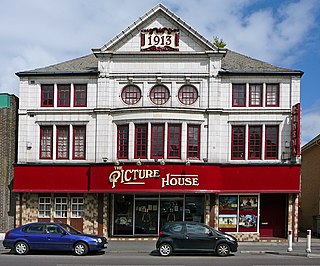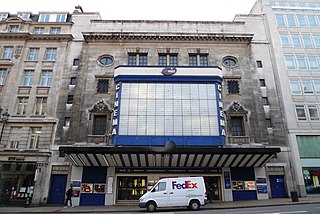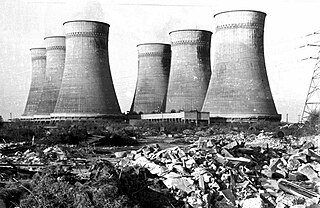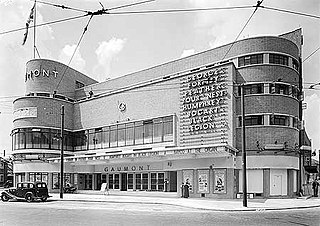This article relies largely or entirely on a single source .(November 2009) |
The Chelsea Classic Cinema was a cinema originally opened in 1913 as the Chelsea Picture Playhouse, in the King's Road, Chelsea.

A movie theater, cinema, or cinema hall, also known as a picture house or the pictures, is a building that contains an auditorium for viewing films for entertainment. Most, but not all, theaters are commercial operations catering to the general public, who attend by purchasing a ticket. Some movie theaters, however, are operated by non-profit organizations or societies that charge members a membership fee to view films.

King's Road or Kings Road, is a major street stretching through Chelsea and Fulham, both in west London. It is associated with 1960s style and with fashion figures such as Mary Quant and Vivienne Westwood. Sir Oswald Mosley's Blackshirt movement had a barracks on the street in the 1930s.

Chelsea is an affluent area of West London, bounded to the south by the River Thames. Its frontage runs from Chelsea Bridge along the Chelsea Embankment, Cheyne Walk, Lots Road and Chelsea Harbour. Its eastern boundary was once defined by the River Westbourne, which is now in a pipe above Sloane Square Underground station. The modern eastern boundary is Chelsea Bridge Road and the lower half of Sloane Street, including Sloane Square. To the north and northwest, the area fades into Knightsbridge and Brompton, but it is considered that the area north of King's Road as far northwest as Fulham Road is part of Chelsea.
It was designed by Felix Joubert, the cabinet maker and owner of The Pheasantry next door at number 152. It was built on land previously occupied by Box Farm (built in 1686 and demolished in 1899). On the western corner of Markham Street, it was initially opened by the London & Provincial Electric Theatre Company in 1913 with seating for 394 on a single floor. [1] In the 1920s it was known as the Electric Theatre.

The Pheasantry, 152 King's Road, Chelsea, London, is a Grade II listed building that was home to a number of important figures in 1960s London and a small music venue in the 1970s where a number of bands were able to play their first gigs.
By 1937 it had been taken over by Classic Cinemas Ltd, who specialised in repertory screenings of classic Hollywood films, and was renamed the Classic Cinema, when the facade was reduced in height and given a 'modern' look which it kept until it closed on 4 August 1973.
It was the venue for The Rocky Horror Show four weeks after it had opened in London (at the Royal Court Theatre Upstairs), playing for three months. [1] After the run ended, the building was demolished, replaced by a branch of Boots the Chemist in 1973.

The Rocky Horror Show is a musical with music, lyrics and book by Richard O'Brien. A humorous tribute to the science fiction and horror B movies of the late 1940s through to the early 1970s, the musical tells the story of a newly engaged couple getting caught in a storm and coming to the home of a mad transvestite scientist, Dr Frank-N-Furter, unveiling his new creation, a sort of Frankenstein-style monster in the form of an artificially made, fully grown, physically perfect muscle man named Rocky Horror, complete "with blond hair and a tan".















